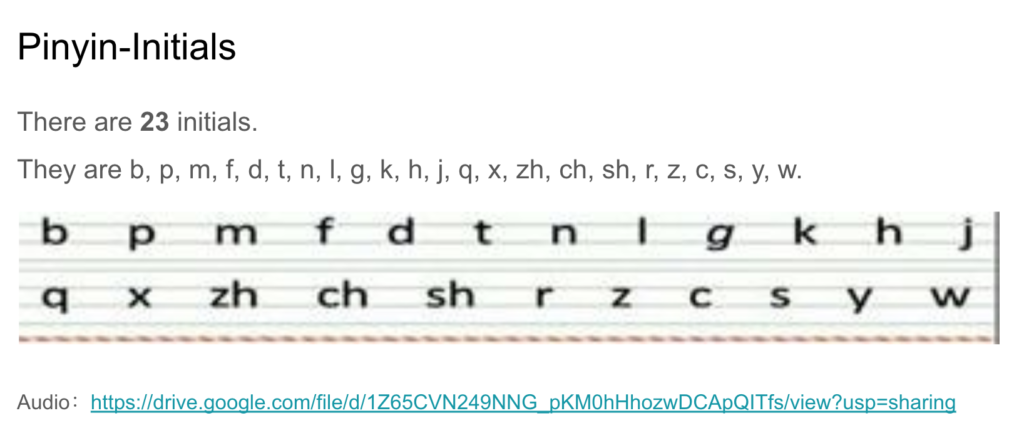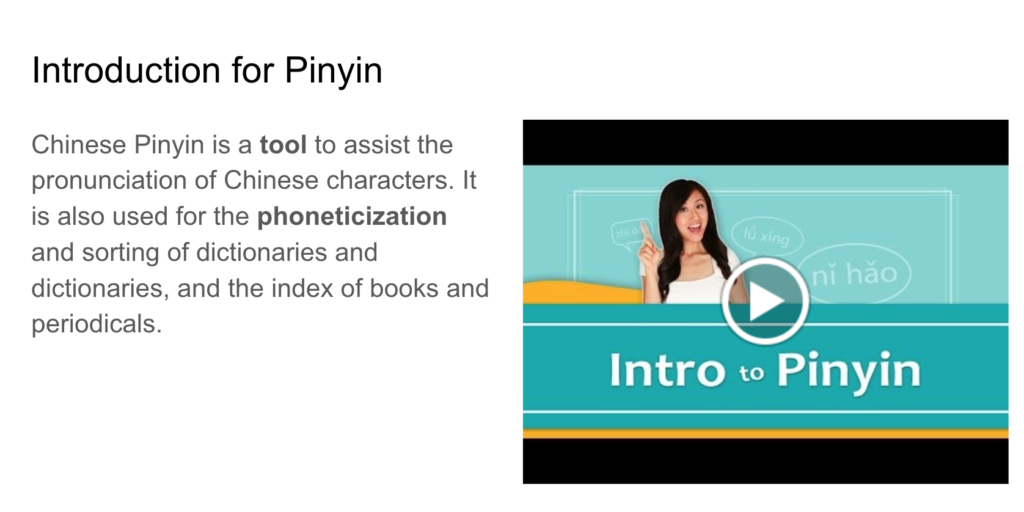
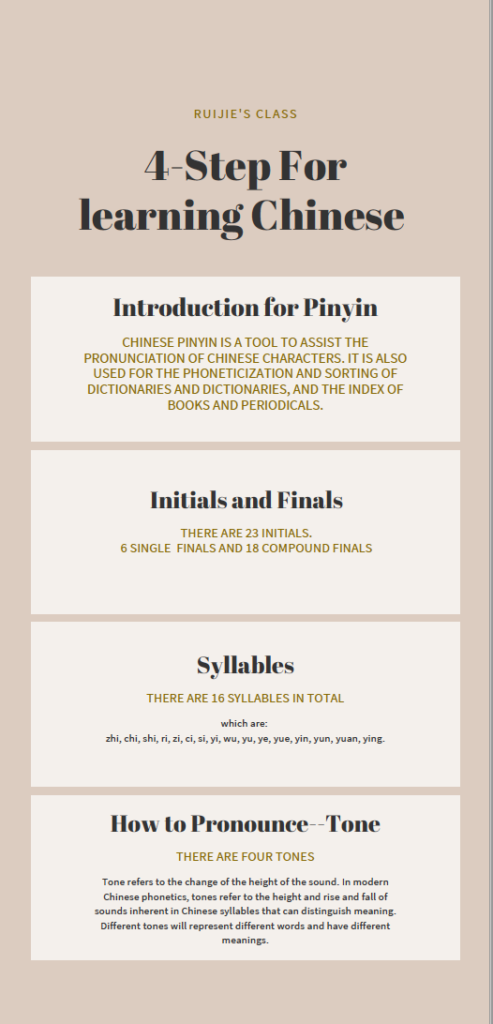
First of all, we have learned about different learning theories according to the First week, I think my PowerPoint is more suitable for behaviorism theory and cognitivism theory. Because pinyin is the basis for learning Chinese, it needs to memorize and remember a lot of unfamiliar knowledge, so it is important to establish a conditioned reflex to knowledge through behaviorist theory, and also cognitivist theory can help students self-generate a learning strategy that is most efficient for themselves.
Next, let’s look at my first hands on activity. First of all, there are a lot of words on the PPT of each page, which is not convenient for students to read. Just like the Coherence Principle I wrote in my third post, I try to simplify the content of each PowerPoint page. In the new PPT, I segmented the main content and deleted some text, so that I can see what is being said more clearly. At the same time, I also bolded the key parts according to the Signaling Principle to make it easier for students to learn.
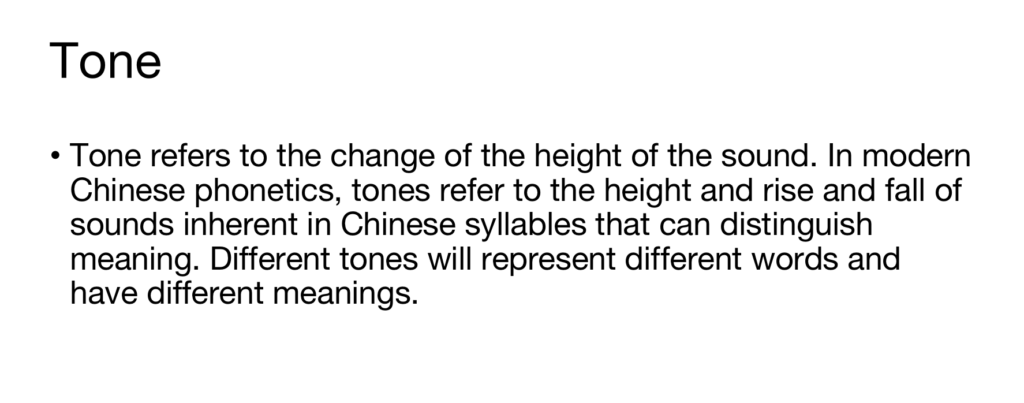
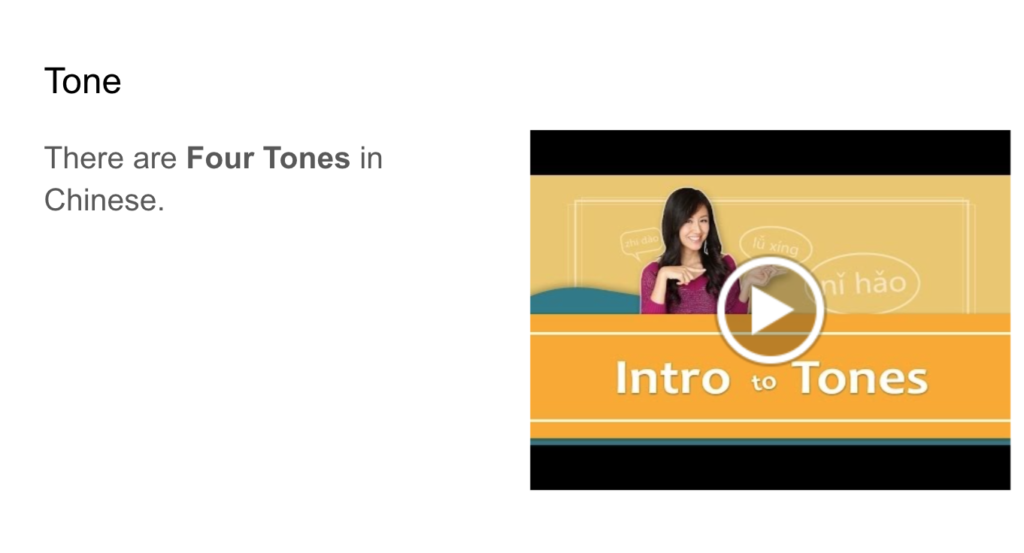
Secondly, in the later part of the lesson about Pinyin, you can see that my previous PPT only had text, but there were no pictures or audio or video. So in the new PPT, I added some pictures to show how to write the pinyin on paper, and I put a Youtube video at the beginning of each section, I think these videos can help students to understand the content of pinyin and tones much better. In addition to the videos, I think it is also helpful to add the audio, because if there is no audio PPT at the beginning, students will only know the pinyin, but they don’t know how to read it aloud. After I added this audio, students can follow the audio and read the pinyin aloud. I also put some examples of tones in the tones section, because many other languages, including English, do not have tones, so some students who have not been exposed to tones may have a relatively large blind spot for tones.

